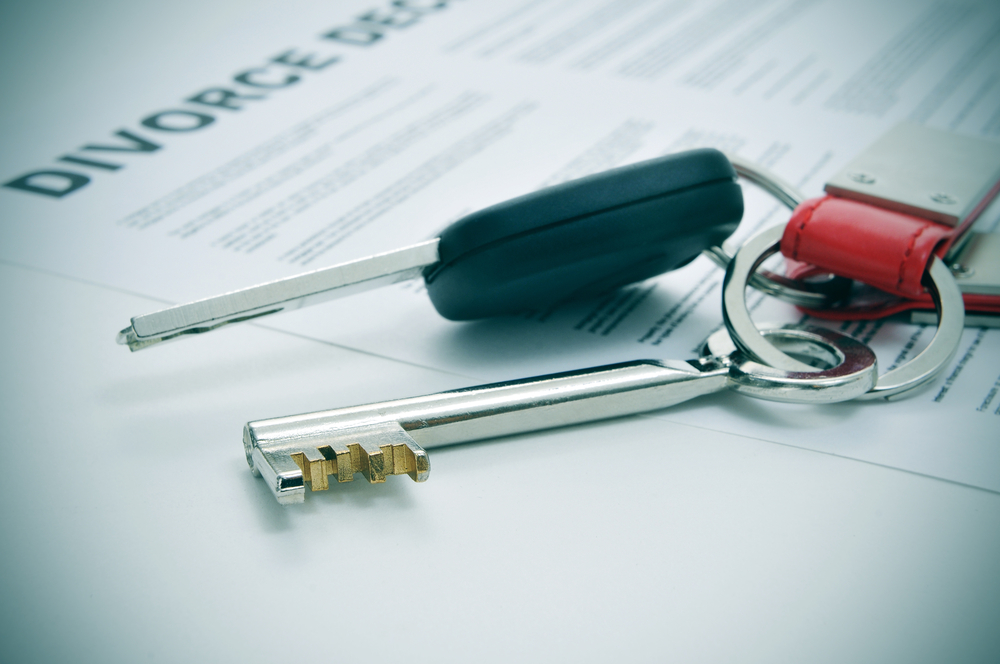Interested in knowing ‘what is an uncontested divorce?’
Divorce is never an easy decision, but if you’re considering a divorce in California, chances are you’re looking for an amicable one. An uncontested divorce allows you to divorce without breaking the bank – or your sanity.
Read on to know the advantages of an uncontested divorce, how the process works, and some tips to help you get through your California divorce as smoothly as possible.
First, let’s look at the different types of divorce in California and the answer to the question ‘what is an uncontested divorce?’
Your options when it comes to divorce in California
There are several types of divorce in California: no-fault, summary, contested, and uncontested.
No-fault divorce is one of the most common types of divorce in the state. This type of divorce does not require either party to prove that the other party is at fault for the breakdown of the marriage.
Summary divorce is typically reserved for couples who have been married for a short period of time and do not have any minor children.
A contested divorce is when you and your spouse cannot agree on one or more aspects of your divorce. This can include issues related to property division, child custody, or spousal support. This type of divorce can be very costly and time-consuming, as you will have to go through the court system to have a judge make a decision on your behalf.
Now to answer the important question “what is an uncontested divorce?”
What is an uncontested divorce?
An uncontested divorce, on the other hand, is when you and your spouse are able to reach an agreement on all aspects of your divorce.
These issues include child custody, child support, property division, and alimony. Each party typically hires its own lawyer to help them reach an agreement. Once an agreement is reached, the divorce papers are filed with the court, and the divorce is finalized.
Advantages of an uncontested divorce
There are many advantages to an uncontested divorce, including the following:
It is typically faster than a contested divorce – Contested divorces in California typically take at least six months to complete. However, the actual amount of time it takes can vary depending on the specific circumstances of the case. If the parties are unable to resolve their differences and the divorce goes to trial, it can take much longer. In some cases, a contested divorce can take years to resolve.
This is due to the processes involved in deciding on all matters related to:
- Your debts, assets, and income
- Child custody and child maintenance
- Domestic violence
- Spousal support
Once the petition for divorce is received, the process continues with:
- Discovery of financial documents
- Disclosure of the financial situation of each spouse
- Witness depositions
- Any necessary investigations
- Settlement negotiations
- Trial if the parties cannot reach an agreement
- Post-trial motions
- Final judgment
- Appeals on the final judgment
The uncontested divorce process is typically faster and can take anywhere from six weeks to four months, depending on the county in which the divorce is filed. Because of the state’s no-fault divorce provisions, your marriage can be dissolved without a lengthy litigation process.
It is typically less expensive than a contested divorce – According to an estimate, the cost of a contested divorce, on average, is $17,500 when there is no involvement of children.
However, the costs can go up to anywhere from $25000 to $38,000 for couples with children or when there are several contested issues.
Appraisals and evaluations that the judge may require when the couple cannot agree on a parenting plan can cost extra.
The cost of an uncontested divorce in California will vary depending on the county in which you file for divorce. Filing fees range from $200 to 500. You can also apply for a fee waiver in California if you are unable to afford the filing fee.
It can be less stressful than a contested divorce- While no divorce is easy, uncontested divorces often cause less stress and anxiety than other types of divorce. This is because there is typically less conflict involved and usually the parties are able to communicate and cooperate with one another.
You can better control the outcome of the divorce, rather than leaving it up to a judge to decide.
The uncontested divorce process
California’s divorce process is one of the most simple and straightforward in the United States. When the process is uncontested, the process is much quicker and easier.
Here is what you need to know about the uncontested divorce process.
Ensure you meet these requirements:
To file for an uncontested divorce in California, you must meet the following requirements:
- You or your spouse must have been a resident of California for at least six months
- You must have been a resident of the county in which you plan to file for at least three months
- You and your spouse must be in agreement about all terms of the divorce, including child custody, child support, alimony, and division of property
Draw up a settlement agreement:
If you meet these requirements, you will need to draw up a “settlement agreement.” This is a legally binding contract between divorcing spouses that defines all aspects of their divorce, including child custody, child support, spousal support, and the division of property and debts.
A settlement agreement can be reached through negotiation, mediation, or arbitration, and it is typically signed by both spouses and their attorneys. Once it is signed, it is enforceable in court.
If you have children, you will also need to file a parenting plan with the court. The parenting plan is a document that outlines how you and your spouse will co-parent your children.
Note that an uncontested divorce is not an option if one party accuses the other of:
- emotional or physical abuse
- child abuse
- attempting to alienate the affections of the children
- concealing properties or profits
File the initial paperwork:
After creating the agreement, the initial paperwork needs to be filed with the court. The petitioner (the one who initiates the divorce) files the petition that explains the legal reason or ground for divorce and that you are seeking a divorce.
In addition to providing information about yourself, you will need to fill out forms to provide details of your children if they are below the age of 18. Provide the details of child support and custody arrangements.
The California Courts website has the full list of instructions and forms you need to fill out. Here is a list of some of the forms that you need to fill out for an uncontested divorce:
- The Petition for divorce – Form FL-100
- Summons – Form FL-110
- Blank response form – Form FL – 120
- Couples who have children need to fill out Form FL – 105, a blank declaration under the UCCJEA (Uniform Child Custody Jurisdiction and Enforcement Act)
- Form FL-117 is an acknowledgment of receipt that shows that your spouse has received, accepted, and acknowledged the forms.
- Form FL-115 that shows you completed serving the forms
- Declaration of Disclosure
The court charges a fee for filing the divorce paperwork. In California, the fee charged is $435 for filing the petition and the response. You can also request a fee waiver by filling out the relevant form and submitting it to the court.

Serve the divorce papers:
Once you submit your paperwork and file the petition, you will need to serve your spouse with the divorce papers. You can serve your spouse in person or by mail. If you serve your spouse by mail, you will need to have someone over the age of 18 sign the papers and confirm that your spouse received them.
Your spouse will then have 30 days to respond to the divorce petition. If they do not respond, the court will assume that they agree to the terms of the divorce and will move forward with granting the divorce.
If your spouse does respond to the divorce petition and does not agree with you on any issue, you will need to attend a mediation session with them. Mediation is a process where you and your spouse meet with a neutral third party to try to reach an agreement on the terms of your divorce.
Once the respondent files their response, your case is considered to be an uncontested divorce. The respondent files the papers and pays the filing fee, after which their court forms are served to the petitioner.
Disclose financial documents:
Each party will then disclose the financial documents declaring what they owe and own. This disclosure makes it easier for the parties to divide their debt and property and debt.
Obtain the decree:
The court then approves the divorce and signs a judgment to the effect.
However, the divorce does not become final until all the paperwork is filed. Your spouse or you must submit the final forms requesting a judgment of divorce. These forms contain details on child custody, spousal support, property, and debt.
A key advantage of an uncontested divorce is that if you and your spouse reach an agreement on all the issues, you may not need to go to court.
At this point, while you have a clear idea of what is an uncontested divorce, you may be wondering about summary dissolution, and if you do qualify for the same. Let’s look at what a summary dissolution is and how it is different from an uncontested divorce.
What is a summary dissolution?
A summary dissolution is a type of divorce available to couples in California who meet certain requirements. To be eligible for a summary dissolution, a couple must:
- be married for less than 5 years
- have no children together
- have no joint property or debt
- not own a home together
- not have any spousal support obligations
In addition, the community property value should not be above $40,000 while the combined debt should be less than $6,000.
If a couple meets all of these requirements, they can file for a summary dissolution, which is a simpler and faster process than a traditional divorce. While a summary dissolution may not be right for everyone, it can be a helpful option for couples who want to end their marriage quickly and without a lot of hassle.
What role does a California divorce attorney play in an uncontested divorce?
In an uncontested divorce, both parties have agreed to the terms of the divorce and do not require the assistance of a divorce attorney. However, it is still recommended that each party consults with an attorney. An experienced California divorce attorney helps ensure that you understand the terms of the divorce and that the divorce is processed smoothly.
Even in an uncontested divorce, there are many details that need to be taken care of and multiple forms to fill. A trusted attorney can help ensure the relevant forms are accurately filled to avoid errors and delays in obtaining the divorce.
In addition, if you have a complex financial situation or if you have minor children, it may be wise to seek legal counsel. A lawyer can provide guidance on the division of assets and custody arrangements and ensure that your rights are protected.
While going ahead with an uncontested divorce, you may find that the communication lines with your spouse have shut down. There may also be some points that you or your spouse had never considered.
Consulting an attorney helps you understand and resolve issues that can crop up unexpectedly, derailing the smooth and straightforward process of an uncontested divorce.
Get the legal expertise you need at the right time
As the leading expert on all aspects of a California divorce, we at Heath Baker Law understand the nuances of California law and the uncontested divorce process.
Whether you have complex assets or there are children involved, our experienced divorce lawyer will work with you to ensure that your rights are protected. Above all, our goal is to ensure the divorce process is as stress-free as possible for you and your family.
Get in touch with us to know more about your divorce options.

